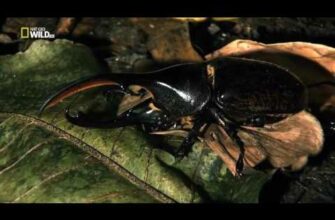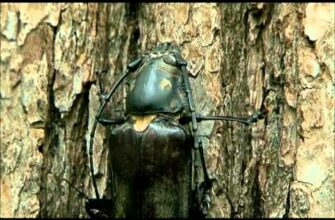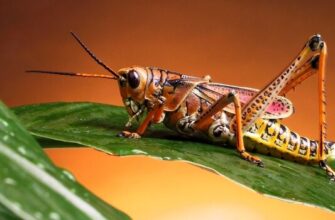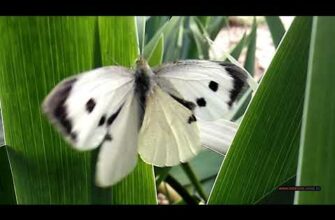The termite is sometimes referred to as the white ant. He got this nickname because of the similarity of appearance with white ants. Termites feed on dead plant material, usually in the form of wood, leaf litter, or soil. Termites are significant pests, especially in subtropical and tropical regions. Because termites eat wood — they cause great damage to buildings and other wooden structures.
View origin and description
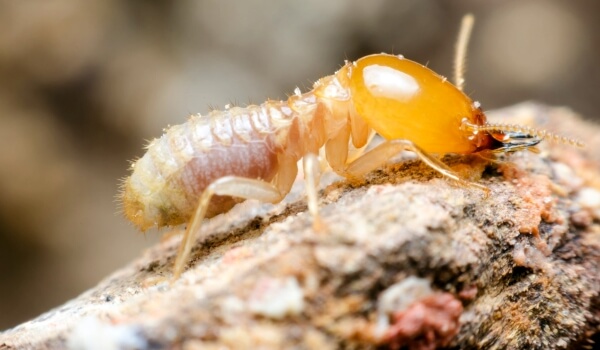
Photo: Termite
The termite belongs to the order of cockroaches called Blattodea. Termites have been known for decades to be closely related to cockroaches, a predominantly arboreal species. Until recently, termites had the order Isoptera, which is now a suborder. This new taxonomic shift is supported by data and research that termites are actually social cockroaches.
Origin of the name Isoptera — Greek and means two pairs of straight wings. For many years the termite was called the white ant and was commonly confused with the real ant. Only in our time and with the use of microscopes have we been able to see the differences between the two categories.
The earliest known termite fossil dates back over 130 million years ago. Unlike ants, which undergo complete metamorphosis, each individual termite has undergone incomplete metamorphosis, which proceeds through three stages: egg, nymph, and adult. Colonies are capable of self-regulation, which is why they are often referred to as super-organisms.
Fun fact: Termite queens have the longest lifespan of any insect in the world, with some queens living up to 30-50 years.
Appearance and Features
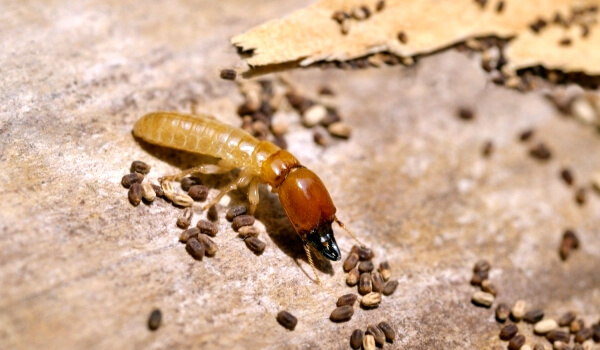
Photo: Termite Insect
Termites usually come in small sizes — 4 to 15 mm long. The largest surviving to date is the queen of termites of the species Macrotermes bellicosus, whose length exceeds 10 cm. Another giant is the termite of the species Gyatermes styriensis, but he did not live to this day. It once flourished in Austria during the Miocene era and had a wingspan of 76 mm. and a body length of 25mm.
Most workers and termite soldiers are completely blind, as they lack a pair of eyes. However, some species, such as Hodotermes mossambicus, have compound eyes that they use for orientation and to distinguish sunlight from moonlight. Winged males and females have eyes and lateral ocelli. Lateral ocelli, however, are not found in all species of termites.
Video: Termites
Like other insects, termites have a small, tongue-like upper lip and clypeus; clypeus divided into postclypeus and anteclypeus. Thermite antennas have a number of functions such as the sense of touch, taste, smells (including pheromones), heat, and vibration. The three main segments of the thermite antenna include the scape, pedicel, and flagellum. The mouth parts contain the upper jaws, lips, and a set of mandibles. The maxillary and labia have tentacles that help termites feel and process food.
In keeping with the anatomy of other insects, the termite thorax has three segments: prothorax, mesothorax, and metathorax. Each segment contains a pair of legs. In winged females and males, the wings are located at the mesothorax and metathorax. Termites have a ten segmented abdomen with two plates, tergites and sternites. The reproductive organs are similar to those of cockroaches, but more simplified. For example, the reproductive organ is not present in males, and sperm is immobile or aflagellate.
Unproductive termite castes are wingless and rely solely on their six legs for locomotion. Winged males and females only fly for short periods, so they also rely on their legs. The appearance of the legs is similar in each caste, but the soldiers have large and heavy legs.
Unlike ants, the hindwings and forewings are the same length. In most cases, winged males and females — bad pilots. The technique of their flight — launch yourself in the air and fly in a random direction. Research shows that compared to larger termites, smaller termites cannot fly long distances. When a termite is in flight, its wings remain at right angles, and when a termite is at rest, its wings remain parallel to its body.
Where do termites live?
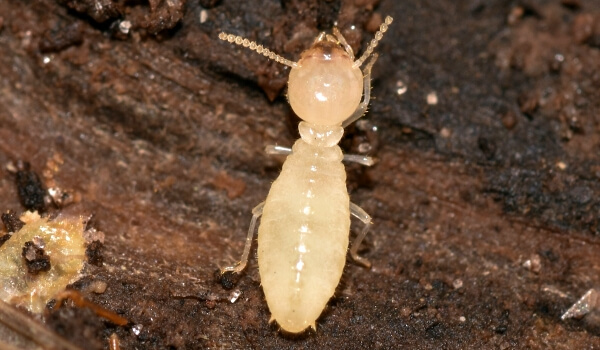
Photo: White Termite
Termites are found on every continent except Antarctica. Not very many of them are found in North America and Europe (10 species are known in Europe and 50 in North America). Termites are common in large numbers in South America, where more than 400 species are known. Of the 3,000 species of termites currently classified, 1,000 are found in Africa. In some regions they are very common.
There are approximately 1.1 million active termite mounds in the northern Kruger National Park alone. There are 435 species of termites in Asia, mostly found in China. In China, termite species are limited to mild tropical and subtropical habitats south of the Yangtze River. In Australia, all ecological groups of termites (wet, dry, underground) are endemic to the country, with over 360 classified species.
Due to their soft cuticles, termites do not inhabit cool or cold habitats. There are three ecological groups of termites: wet, dry and underground. Dampwood termites are found only in coniferous forests, while Drywood termites — in hardwood forests; underground termites live in a wide variety of areas. One species in the dry rock group is the West Indian rock termite (Cryptotermes brevis), which is an invasive species in Australia. In Russia, termites are found in the area near the cities of Sochi and Vladivostok. About 7 species of termites have been found on the territory of the CIS.
What do termites eat?
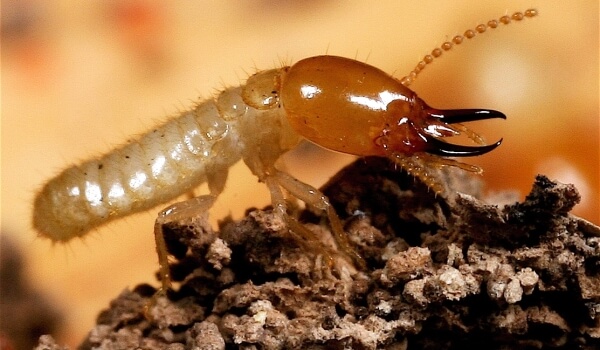
Photo: Termite Animal
Termites — they are detritivores, consuming dead plants at any level of decomposition. They also play a vital role in the ecosystem by recycling waste such as dead wood, feces, and plants. Many species eat cellulose, having a special midgut that breaks down the fiber. Termites form methane during the breakdown of cellulose, which is released into the atmosphere.
Termites rely primarily on symbiotic protozoa (metamonads) and other microbes such as flagellar protists in their guts to digest cellulose, allowing them to ingest end products for their own use. Intestinal protozoa such as Trichonympha in turn rely on symbiotic bacteria embedded on their surface to produce some of the necessary digestive enzymes.
Most higher termites, especially those in the Termitidae family, can produce their own cellulose enzymes, but they rely primarily on bacteria. The flagella have been lost in these termites. Scientists’ understanding of the relationship between the termite gut and microbial endosymbionts is still in its infancy; however, what is true of all termite species is that the workers feed the other members of the colony with substances obtained from the digestion of plant material, from the mouth or anus.
Some species of termites practice fungiculture. They maintain a “garden” of specialized fungi of the genus Termitomyces that feed on insect excrement. When the mushrooms are eaten, their spores pass intact through the gut of termites to complete the cycle by germinating in fresh fecal pellets.
Depending on their feeding habits, termites are divided into two groups: lower termites and higher termites. Lower termites mainly feed on wood. Since wood is difficult to digest, termites prefer to eat fungus-infested wood because it is easier to digest and mushrooms are high in protein. Meanwhile, higher termites consume a wide range of materials, including feces, humus, grass, leaves, and roots. The intestines in lower termites contain many types of bacteria along with protozoa, while higher termites have only a few types of bacteria without protozoa.
Fun Fact: Termites will chew on lead, asphalt, stucco, or mortar to find wood.
Character and Lifestyle Traits
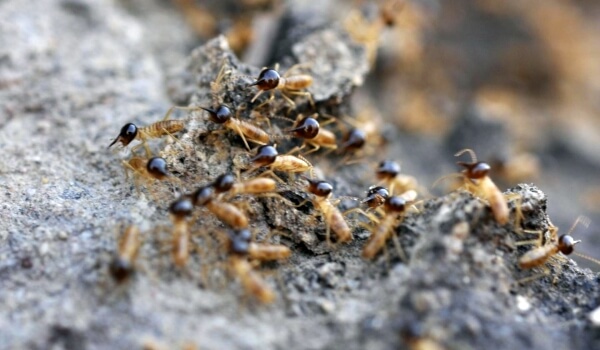
Photo: Large termites
Seeing termites can be quite difficult , as they move in the dark and do not like light. They move along the passages that they themselves have built in wood or earth.
Termites live in nests. Nests can be roughly divided into three main categories: underground (completely underground), above-ground (protruding above the soil surface) and mixed (built on a tree, but always connected to the ground through shelters). The nest has many functions such as providing sheltered living space and shelter from predators. Most termites build underground colonies rather than multifunctional nests and mounds. Primitive termites usually nest in wooden structures such as logs, stumps and dead parts of trees, as termites did millions of years ago.
Termites also build mounds, sometimes reaching a height of 2.5 -3 m. The mound provides termites with the same protection as the nest, but much more powerful. Mounds located in areas with torrential and continuous rainfall are prone to erosion due to their clay-rich construction.
Communication. Most termites are blind, so communication occurs primarily through chemical, mechanical, and pheromonal cues. These communication methods are used in a variety of activities, including foraging, searching for reproductive organs, building nests, recognizing nest occupants, nuptial flight, detecting and fighting enemies, and protecting nests. The most common way to communicate — through the antenna.
Social Structure and Reproduction
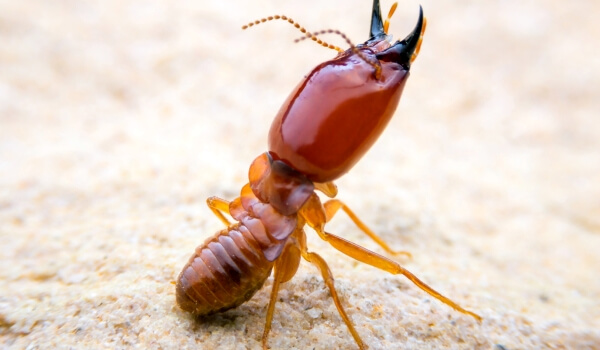
Photo: Termite Insect
Termites have a caste system:
- King;
- Queen;
- Secondary Queen;
- Tertiary Queen;
- Soldier;
- Worker.
Worker termites take on most of the labor in the colony, being responsible for finding food, storing food, and keeping broods in the nests. The workers are tasked with digesting the cellulose in the food, thus they are the main processors of diseased wood. The process of worker termites feeding other nest occupants is known as tropholaxis. Trophallaxis — it is an effective nutritional tactic for the conversion and recycling of nitrogenous components.
This frees the parents from feeding all but the first generation of children, allowing the group to grow in large numbers and ensuring the transfer of the necessary intestinal symbionts from one generation to the next. Some termite species do not have a true worker caste, instead relying on nymphs to do the same work without being classified as a separate caste.
The soldier caste has anatomical and behavioral specializations, their sole purpose — protect the colony. Many soldiers have large heads with heavily modified powerful jaws so enlarged that they cannot feed themselves. Therefore, they, like minors, are fed by workers. Many species are easy to identify, with soldiers having larger, darker heads and large mandibles.
Among some termites, soldiers can use their globular heads to block their narrow tunnels. Different types of termites can have soldiers of large and small sizes, as well as noses that have a horn-shaped nozzle with a frontal projection. These unique soldiers can spray harmful, sticky secretions containing diterpenes on their enemies.
The reproductive caste of a mature colony includes fertile females and males known as queen and king. The queen of the colony is responsible for producing eggs for the colony. Unlike ants, the king mates with her for life. In some species, the queen’s belly swells dramatically, increasing fertility. Depending on the species, the queen starts producing reproductive winged individuals at certain times of the year, and huge swarms emerge from the colony when courtship flight begins.
Natural enemies of termites
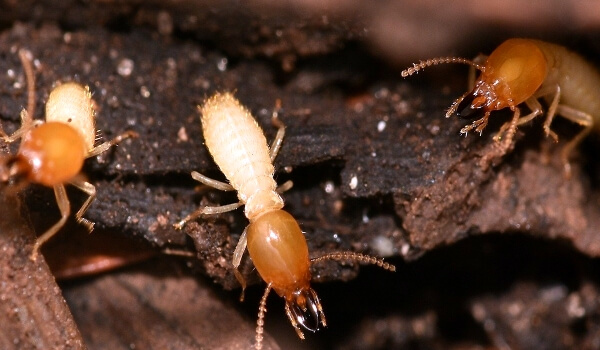
Photo: Animal Termite
Termites are consumed by a wide variety of predators. For example, the termite species “Hodotermes mossambicus” was found in the stomachs of 65 birds and 19 mammals. Many arthropods feed on termites: ants, centipedes, cockroaches, crickets, dragonflies, scorpions, and spiders; reptiles such as lizards; amphibians such as frogs and toads. There are also many other animals that eat termites: aardvarks, anteaters, bats, bears, a large number of birds, echidnas, foxes, mice and pangolins. Fun fact: the earthwolf is able to devour thousands of termites in one night using its long, sticky tongue.
Ants are the biggest enemy of termites. Some genera of ants specialize specifically in hunting termites. For example, Megaponera — it is an exclusively termite-feeding species. They make raids, some of which last for several hours. But ants aren’t the only invertebrates that raid. Many sphecoid wasps, including Polistinae Lepeletier and Angiopolybia Araujo, are known to raid termite mounds during termite nuptial flight.
Population and species status
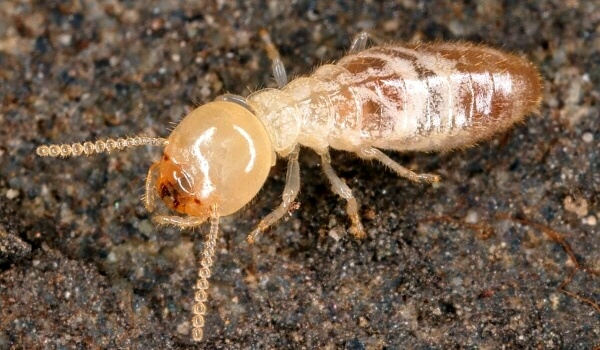
Photo: Termite
Termites are one of the most successful groups insects on Earth, which have increased their population throughout their lifetime.
Colonized most of the land, except for Antarctica. Their colonies range from a few hundred individuals to huge societies with several million individuals. Currently, about 3106 species have been described, and this is not all, there are several hundred more species that require description. The number of termites on Earth can reach 108 billion or even more.
Currently, the amount of wood used on the farm and creating a source of food for termites is declining. Despite this, the termite population continues to grow. This growth is accompanied by the adaptation of termites to colder and drier conditions of existence
Today, 7 families of termites are known:
- Mastotermitidae;
- Termopsidae;
- Hodotermitidae;
- Kalotermitidae;
- Rhinotermitidae;
- Serritermitidae;
- Termitidae.
Interesting fact: Termites on Earth outweigh the mass of the human population on Earth, just like ants.
The termite insect has an extremely negative meaning for humanity, since destroy wooden structures. The uniqueness of termites is associated with their influence on the global cycle of carbon and carbon dioxide, on the concentration of greenhouse gases in the atmosphere, which is significant for the global climate. They are capable of releasing large amounts of methane gas. At the same time, 43 species of termites are eaten by humans and fed to domestic animals. To date, scientists control the population, for which they use various methods to track the movement of termites.

